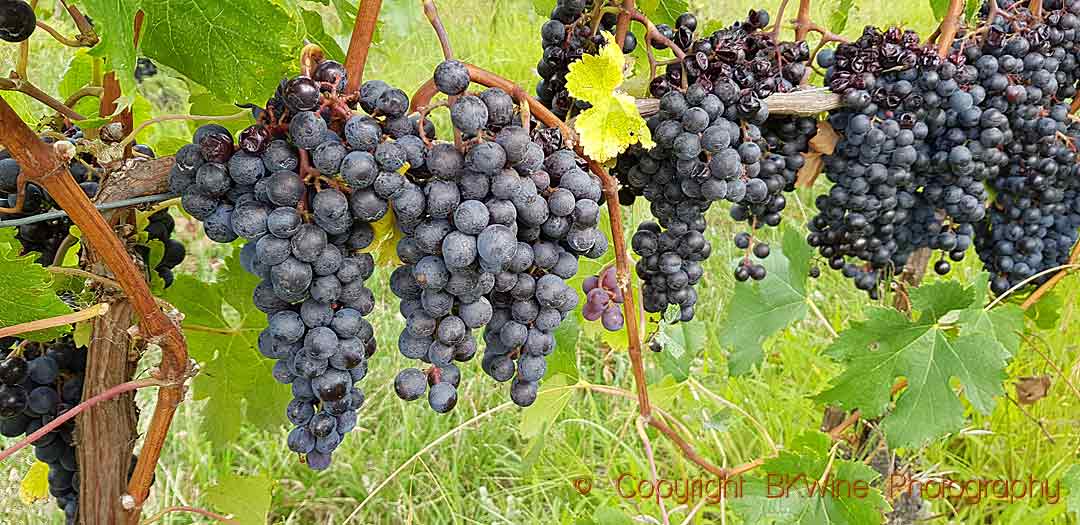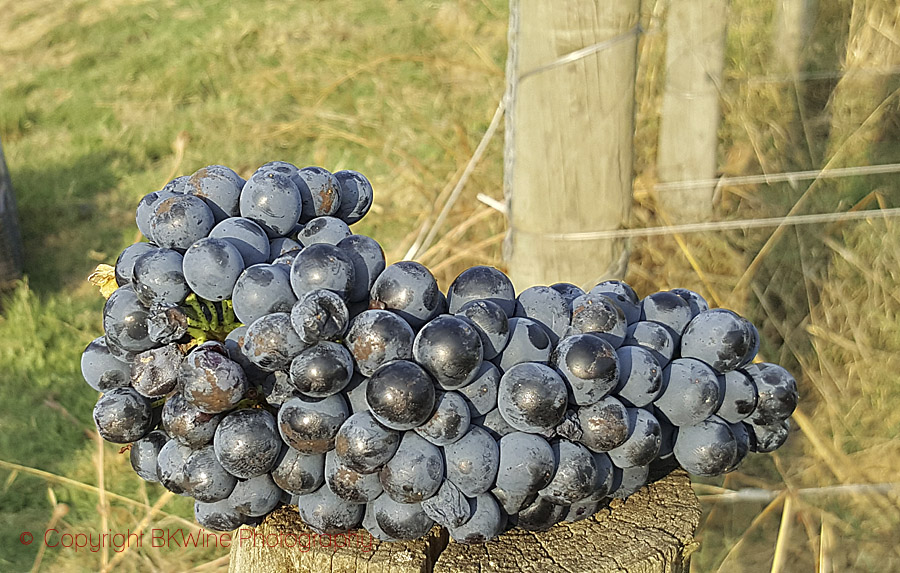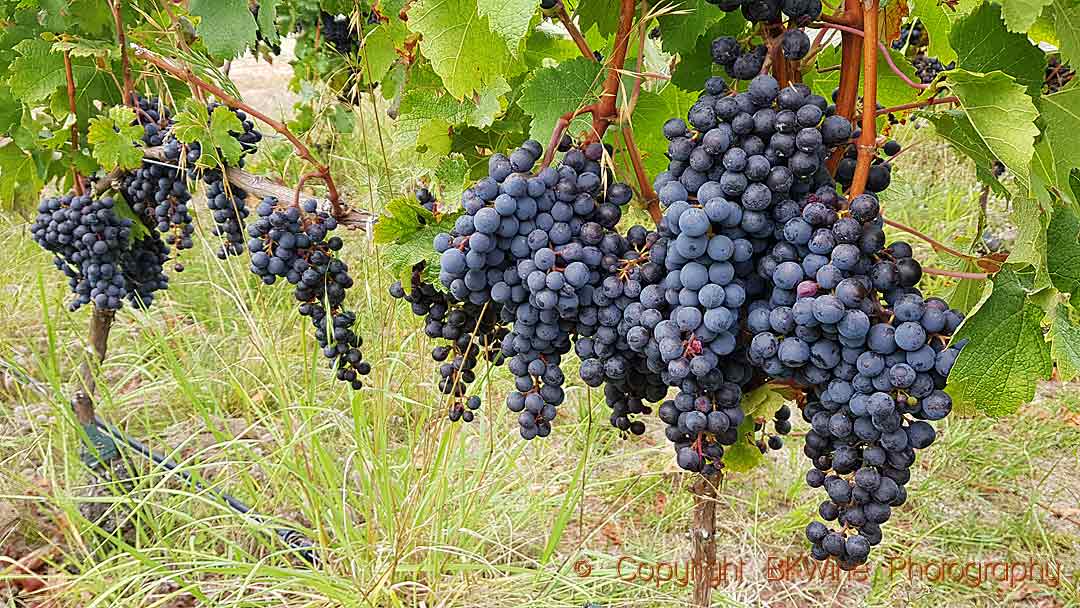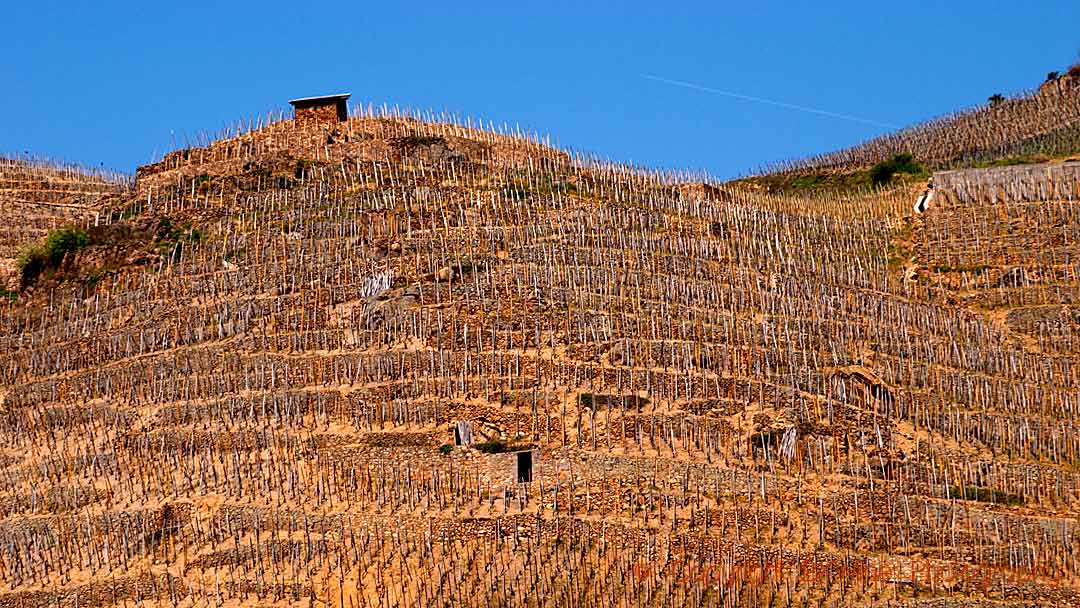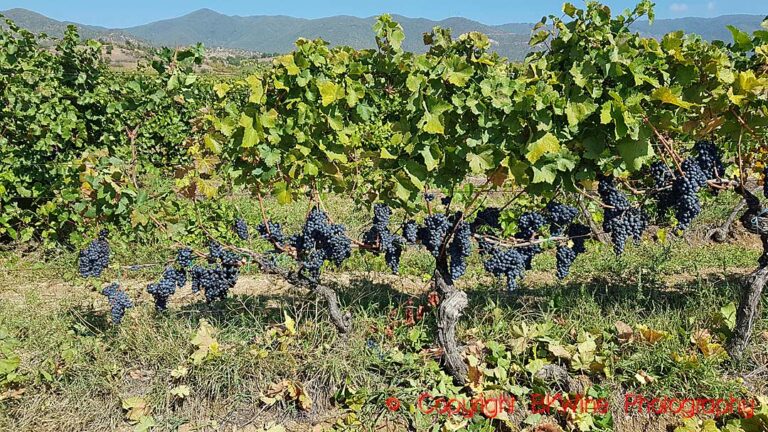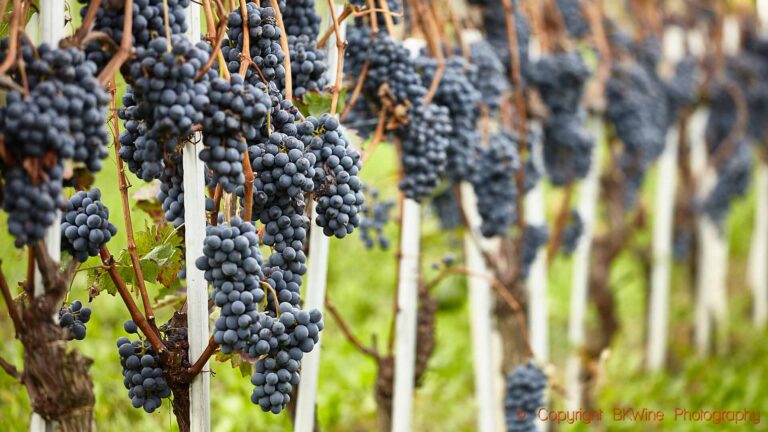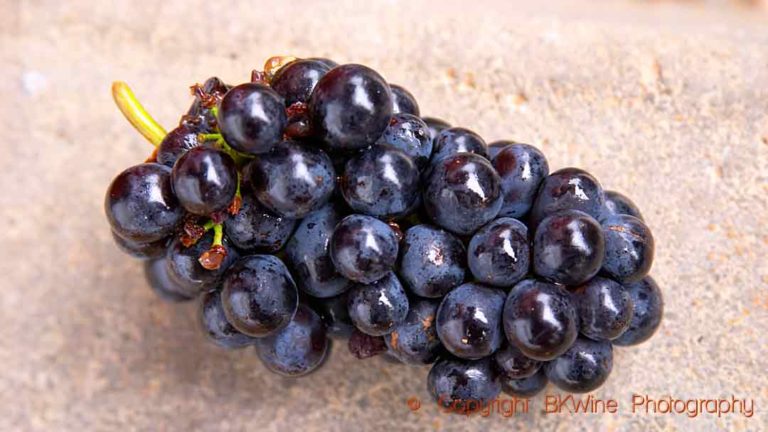Syrah is the fourth most planted red grape in the world after cabernet sauvignon, merlot, and tempranillo. Syrah is found on almost 190,000 hectares across the globe. It is today a fashionable and popular grape that is expanding its territory in many countries. It is not surprising. Syrah is a grape full of character. Here we give you an overview of its characteristics and where it is grown in the world.
France is the largest syrah country in the world with 64 000 hectares. In second place is another famous syrah country, Australia, with 40,000 hectares. Spain is third with almost 20,000 hectares.
This is a longer version of an article published on Forbes.com.
Also, don’t miss our tasting suggestions of wines to taste to learn the character of syrah.
This is an article in our series of presentations of the world’s most popular and exciting grape varieties. Read other articles here:
France
Syrah is the third most planted red grape variety in France, after merlot and grenache. Syrah first became famous as the great grape in the northern Rhône Valley, in the highly acclaimed regions of Côte Rôtie, Hermitage, Crozes-Hermitage, Saint-Joseph and Cornas. Read more about syrah from the northern Rhône Valley here: New star in Saint Joseph: Domaine Bastien Jolivet, superb red and white wines.
There has been a significant increase of Syrah in France in recent years, in the southern Rhône Valley, in Provence and in the Languedoc. This is where the majority of syrah is found today in France. Northern Rhône is, in fact, quite small. There you find less than 3000 hectares of syrah, so less than 5% of the total.
In the southern Rhône Valley, grenache dominates most blends, but many producers like the way syrah adds texture, colour and aromas to the wine. It is not uncommon to see a 50% grenache and 50% syrah blend.
In Languedoc, syrah became an “improvement grape” in the 1980s, which meant that the authorities encouraged the wine growers down here to plant syrah to increase the quality of their wines. That was at a time when a very large portion of Languedoc wines was really very simple. Things have changed much now. Today there are 40,000 hectares in the Languedoc, and it is the most planted grape in the region. Since it almost didn’t even exist in the area in the late 1970s, it is a spectacular increase. The grape is used both for AOP (AOC) and for IGP wines.
It does not thrive everywhere in the Languedoc. It sometimes has problems with the hot and dry climate. But a large portion of the producers uses it. It is a prestigious grape, and they know that consumers like it. They often make a top-of-the-range wine with predominantly syrah. This is sometimes a pity. Syrah can easily dominate a blend and hide some of the typical Languedoc characters. Some growers avoid it for that very reason.
Syrah characteristics
Syrah is reasonably easy to grow. It will grow well in several different climates and soil types. But it is sensitive to drought and yield should be kept relatively low so that it does not lose its concentration. You have to make sure you harvest at the right time. It has a short window for optimum harvesting. The time-span between ripe and over-ripe is short.
Syrah wines can be powerful and rich in tannins. They are always more of less full-bodied. The ageing potential is often excellent. But syrah can also provide wonderfully juicy and fruity wines to drink young, with all fresh fruit still intact.
The Syrah aromas are spicy, sometimes peppery, sometimes with notes of violets, charcuterie and tar. There is always plenty of fruit, black-currant, not least. The grape has a thick skin which gives the wine a dark colour. It is almost always full-bodied wines.
We get the most explicit grape character in wines from the northern Rhône. Down in the Languedoc, syrah often has a style that differs from the Rhône Valley. There is less charcuterie and tar and more intense fruit and spices.
Shiraz in Australia
Nowhere else is the dominance of a few grape varieties as great as in Australia (with the exception of New Zealand). Syrah, cabernet sauvignon and chardonnay account for almost 60% of the total vineyard area. Syrah alone accounts for 28%. It is the country’s most planted grape with 40,000 hectares.
Here in Australia the grape is, of course, called Shiraz. It emerged in the export market in the 1990s. But it was planted for the first time in Australia as early as the late 18th century. Barossa Valley has the country’s, and probably the world’s oldest Shiraz vines, planted in 1843.
Shiraz from Australia got early-on a reputation for being an overabundant wine, with high alcohol and lacking in finesse. But Australia is a big country. So, of course, there are all kinds of Shiraz wines here. Wines from the south-east corner will not be the same as from the east. Climate and soil types vary. The winemaker is of great importance as always.
The mass-produced Shiraz wines sold in bulk are often in the big and bold style. But in Australia, smaller producers make wines with both elegance and nuanced flavours, wines more similar to the Rhone Valley. It is easy to think that all of Australia is hot, but many of the wine districts are cooled by the ocean, with its cold water from Antarctica.
Shiraz in Australia is sometimes blended with Cabernet Sauvignon and sometimes with Grenache and Mourvèdre for a so-called GSM blend. Some trendy winemakers add some viognier to the fermentation tank, the way they sometimes do it in Côte Rôtie.
The country’s most famous and most expensive wine, Penfolds Grange, is, of course, made with mainly Shiraz.
Syrah in other countries
Syrah is on the rise in many different countries. It is among the grapes that show the most significant upward trend in South Africa. In Chile, it is not yet so much planted, but winemakers like it, not least in Casablanca and San Antonio, in the slightly cooler climate on the coast. In New Zealand, there are some outstanding syrah wines, especially in Hawke’s Bay. Read more on syrah in New Zealand in these two articles: New Zealand pioneer Unison Vineyard interprets Gimblett Gravels terroir and Jenny Dobson, legendary Kiwi winemaker, talks about changes and challenges in New Zealand.
In Portugal, syrah is the only French grape that has become popular. Right now it is in tenth place of planted grapes and it is increasing.
In the United States, syrah is the fifth most planted red wine variety with 9,000 hectares. The grape gained ground in California in the late 1990s with a group of producers who loved the Rhône Valley grapes and called themselves the Rhône Rangers. However, the movement lost momentum later on, but syrah is now slightly increasing in the USA. The grape is already a star in Washington State.
Syrah facts
Total worldwide surface: 190 000 hectares
Main countries:
- France, 64 000 hectares
- Australia, 40 000 ha
- Spain, 20 000 ha
- Argentina, 13 000 ha
- USA, 9000 ha
- Chile, 8000 ha
- Portugal, 6000 ha
Characteristics:
Full-bodied, rich, concentrated, aromatic, relatively soft tannins, black pepper, black currants, blackberries, even red fruits, sometimes violets, tar and charcuterie. Always lovely fruit.
Don’t miss the other articles in our grape variety profile series. You can find the list at the beginning of the article.
This article was originally published in a shorter version on Forbes.com.


